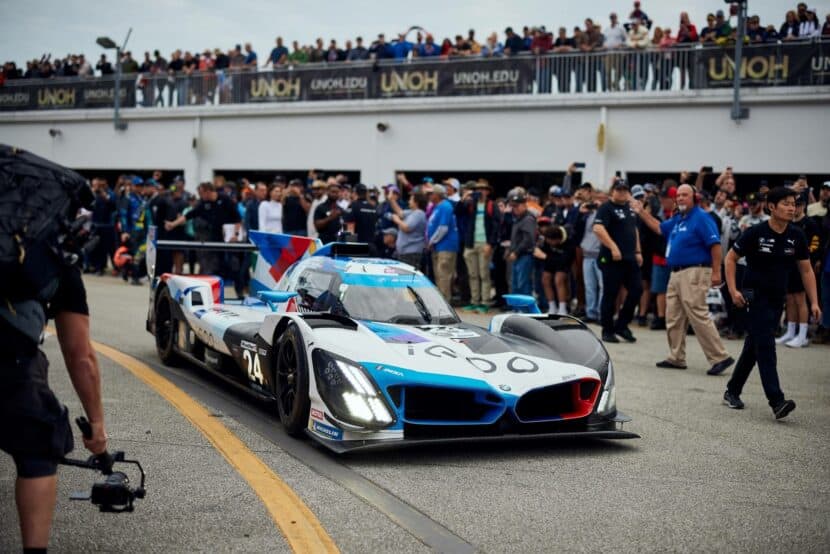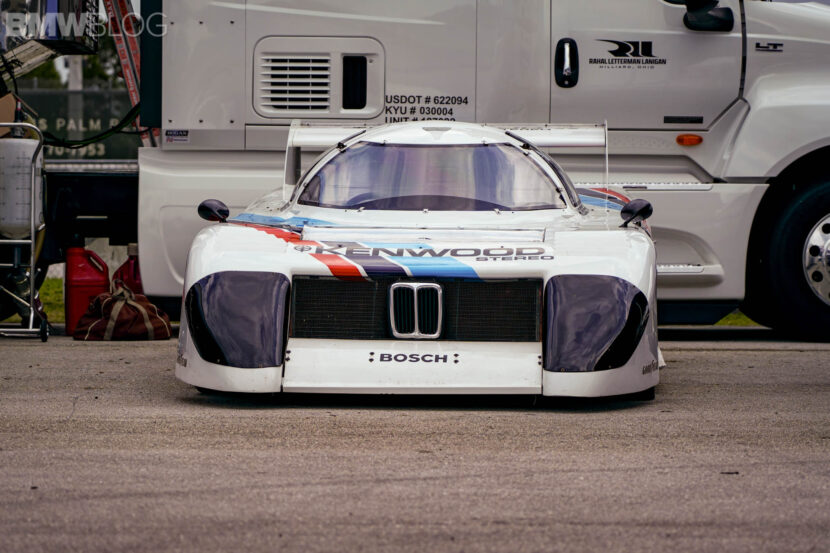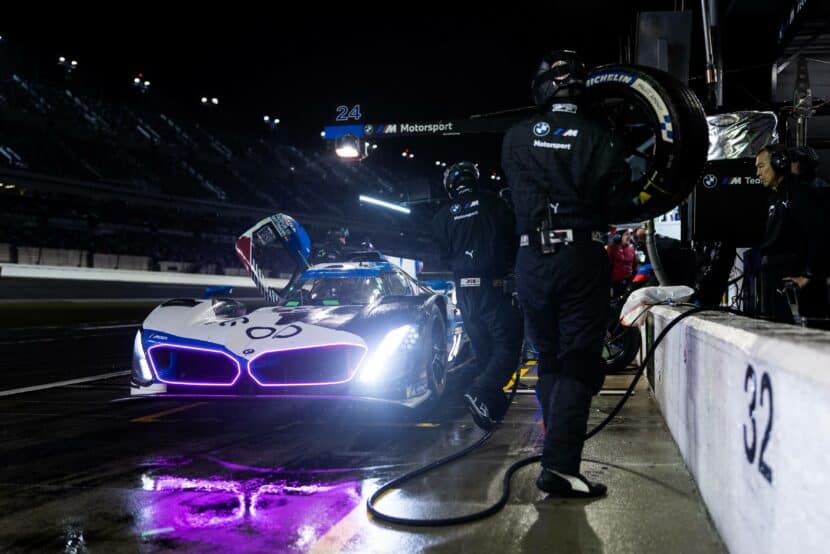BMWBLOG had the chance to sit down with Tom Plucinsky, Department Head, BMW Group Product and Technology Communications, at the 24 Hours of Daytona. We got to review all the crazy performance bits that the BMW M Hybrid V8 GTP car gets and picked up some additional insight about where the car fits into the pantheon of BMW Motorsport cars and why now is a good time for this partially-electrified racer.
All About the BMW M Hybrid V8

So, first and most importantly, the car. The BMW M Hybrid V8 can be thought of as a culmination of every M technology to date. There are plenty of components that we see in production cars: carbon ceramic brakes, for example, and the use of TwinPower Turbo technology. More fascinating, of course, is the stuff unique to the BMW M Hybrid V8 that helps make it an incredible performer.
A snug cockpit fit for one uses the latest Cosworth steering wheel with nearly every function a driver could need on it. A digital rear-view mirror provides a look behind, and adjustable pedals allow quick driver changes. The engine is nestled securely behind the driver. It’s the flat-plane crank P66/3 – a twin-turbocharged version of the P66 engine that raced in the 2017 and 2018 DTM races. In combination with the hybrid drive unit – inside the bell housing, like with many of BMW’s hybrid production cars – it’ll make the class-restricted 671 horsepower/500 kW with ease. A battery pack sits “in the vicinity of” under the passenger seat.
The roughly 2,200-pound BMW M Hybrid V8 gets all its electric power from brake regeneration. With the hybrid component responsible for up to 30 kW of the race-limited 500 kW, it must contribute its fair share. Drivers can use the power “on-demand” – although Plucinsky says it’s primarily used when exiting the pits. “The benefit of that,” he says, “is that instant torque right away. And, we don’t have to go very fast, so it isn’t running out of steam.” Smart thinking.
The Same, But Different
If you don’t know, the BMW M Hybrid V8 uses a Dallara chassis. Dallara is one of four companies permitted to build the current generation of LMDh chassis cars. This means that some parts – such as the fixed, aerodynamic underfloor are the same across all automakers that race using their desired chassis. But the engine, suspension, aerodynamics, and interior ergonomics are all up to the individual automaker to customize. One look at the Cadillac V-LMDh prototype is all you need to see the freedom OEMs receive when designing their version.

BMW M Hybrid V8 and BMW Motorsport History
BMW’s Motorsport history is entwined with that of GTP Class racing. Though not (technically) the first ever GTP Class car, the BMW M1/C raced in Riverside in 1981 was the first purpose-built car for IMSA GTP rules. In 1986 BMW developed and raced the BMW GTP, attempting to debut it at the 24 Hours of Daytona. A fire made that impossible, unfortunately. The last big victory for a BMW prototype was the V12 LMR winning 24 Hours of Le Mans in 1999. Here’s hoping the BMW M V8 Hybrid can change that.
Why Now?

Talking with Tom Plucinsky in the staging area of the 24 Hours of Daytona race, it seems like the most concise answer to the question “why now?” is one word: hype. “It’s a good chance to get our M customers thinking about the future,” he says. “And besides that, it looks really good,” he adds, and we can’t disagree there. He notes that BMW M is on its way to full electrification and cites the XM as the earliest example of that.
The BMW M Hybrid V8 will race a full, two-car IMSA season and will appear at 24 Hours of Le Mans next year, but with a different set of cars. “There might be some other things in store,” he smiles. Here’s hoping we see the car stretching its legs as often as possible. It finished sixth in class at the 2023 24 Hours of Daytona – maybe we’ll see it crack the top five for its next race?
There are a lot more technical details in the video below, so feel free to take a look and don’t forget to subscribe to our channel!







































































